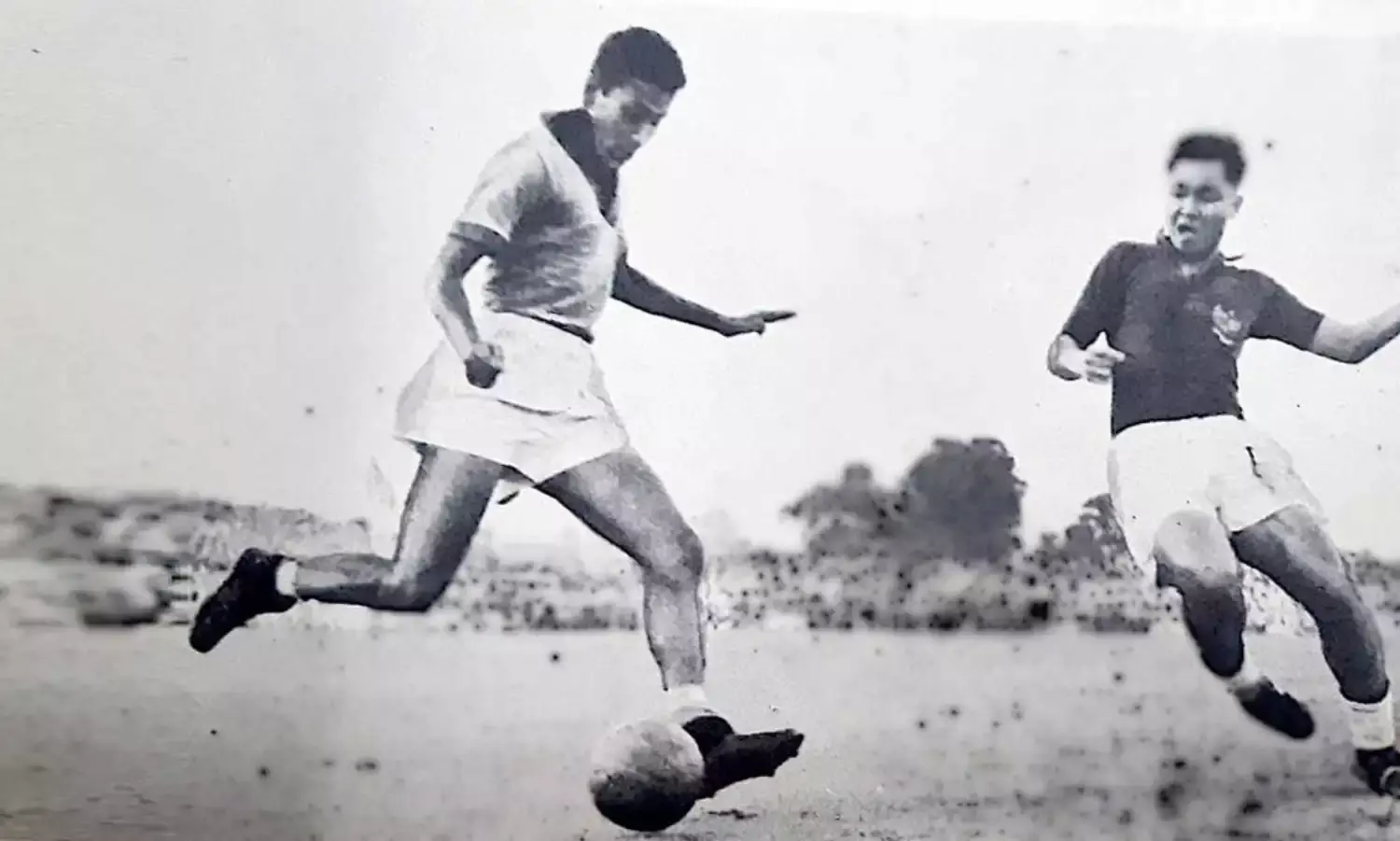PK - Star of Indian Football When the Sport was at its Peak
Remembering Pradip Kumar Banerjee (1936–2020)
As a sports loving teenager in the early and mid sixties the three sports I followed most closely were cricket, tennis and football. It didn’t matter if the Indian cricket team wasn’t doing too well on the international stage. After all as Indians we are all cricket fanatics aren’t we? And the Indian tennis squad, basking under the glorious strokes of Ramanathan Krishnan, was among the leading teams in the world, even making it to the Challenge Round in 1966.
As far as football was concerned, we didn’t know it then but the period from the mid-fifties to the mid-sixties constituted the golden era of Indian football. Not really a force to reckon with in world football, India was still one of the leading teams in Asia. It won the gold medal at the Asian Games in Jakarta in 1962 and making it to the Olympics both in Melbourne (1956) and Rome (1960). In fact at Melbourne India made it to the semifinal, narrowly missing out on a bronze medal after losing to Yugoslavia.
If Indian football was making waves during this period, much of it was due to the troika of P.K.Banerjee, Chuni Goswami and Tulsidas Balram. They were the stars, who commanded a huge fan following wherever they played. And among the three PK, as he was always known, was perhaps the best.
Sunil Chhetri, the biggest star in Indian football today, put it succinctly: “He was a pioneer in every sense of the word, and his achievements will forever have a place in Indian footballing history.’’ Indeed PK was the star of Indian football when the sport was at its peak.
Among the tributes paid to PK on his death on March 20 the words ‘legend’ and ‘colossus’ constituted the refrain, aptly describing his unique contribution to Indian football, duly recognised by FIFA which bestowed upon him its highest honour the FIFA Order of Merit in 2004.
The country too was quick to recognise his immense contribution: PK was the first footballer to receive the Arjuna award in 1961, and he was awarded the Padma Shri in 1990.
Hailed as ‘the man with the golden kick’ PK represented India in 36 official matches, wearing the captain’s armband in six and scoring 19 goals for his country. There were several glorious moments in his long career. He was a member of three consecutive Asian Games teams – 1958 (Tokyo), 1962 (Jakarta) and 1966 (Bangkok) and he holds the record for scoring the most goals in these competitions (six).
When India won the gold medal at Jakarta PK scored the opening goal. He also represented the country at the 1956 Olympics in Melbourne and played a pivotal role in the 4-2 victory over Australia in the quarterfinals. He captained the national side at the Rome Olympics in 1960 where he scored the equaliser when India drew 1-1 with France, a meritorious result.
At a time when football was generally played in the five forward system PK excelled both as a right winger and centre forward thanks to his speed, skill and lethal left foot, which unerringly found its mark. For many of his peers and players of a later generation, PK belonged to that realm of excellence which very few footballers in the country have reached.
His international career ran for a considerable period as he represented India on three occasions at the Merdeka Cup in Kuala Lumpur, where the team won silver in 1959 and 1964 and bronze in 1965.
After retiring from the game in 1967 PK went into coaching, taking charge of various clubs as also the national team. Under his stewardship India won the bronze at the Asian Games in Bangkok in 1970 – the last time it won a medal in football in the Games. He also was the coach when India participated in the Tehran (1974), New Delhi (1982), and Seoul (1986) Asian Games.
He was an extremely popular coach thanks to his game reading ability and excellent man management skills. Indeed he was so good that his work as a coach rivalled his skills as a player. A FIFA certified coach, PK pulled off a heist coaching Mohun Bagan when they held the New York Cosmos 2-2 in an exhibition match starring Pele in 1977.
As a journalist I interviewed him a couple of times and found him to be encyclopedic in his knowledge of various aspects of the game. He loved to talk about football and his sharp brain was always searching for new strategies and tactics and fresh ideas.
Since those glorious days Indian football has fallen to abysmal levels. India are ranked No.108 in the latest FIFA rankings; five years ago they were down to 173 while they stood at 94 a quarter century ago.
These facts make us happy and proud that we were around to see Indian football in its heyday, when Banerjee, Goswami and Balaram regaled us with their ethereal dribbling and sharp shooting skills.





